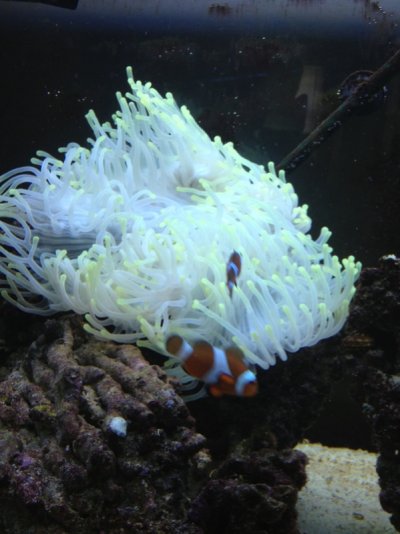yes it is bleached, but you said it was pink before, it should have been red or green, if it was pink then it was already patricianly bleached. I dont think leaving lights on for 2 days did it, something else is wrong, not enough lighting, water conditions, stability of parameters, ect. More information on your tank and set up is needed.
Bleached Anemone:
The lost of color or “bleaching” is a result of the loss of an anemone’s zooxanthellae. This can happen for a number of reasons such as excessive temperature changes, excessive lighting, insufficient lightning, physical stress, excessive salinity, etc.
Just like corals, anemones use their zooxanthellae to feed on light. The other part of their nutrition comes from meat. Unfortunately, they cannot survive solely on captured prey as their primary source of energy. An anemone without zooxanthellae is usually on the brink of death so:
Bleaching can be reversed, but it takes commitment and time. First thing to do is to is to provide excellent water quality and optimal lighting. If you fear your light is too strong, you can simply reduce the photo period and increase the time slowly over a couple of weeks. This will allow the anemone to addapt. When the light is too strong, the anemone will usually hide from it. The anemone should also be feed in small quantities on a regular basis (3-4 times a week) until it’s color recovers. This will keep it from starving since it dosn’t have it’s symbiotic algae to help out.

